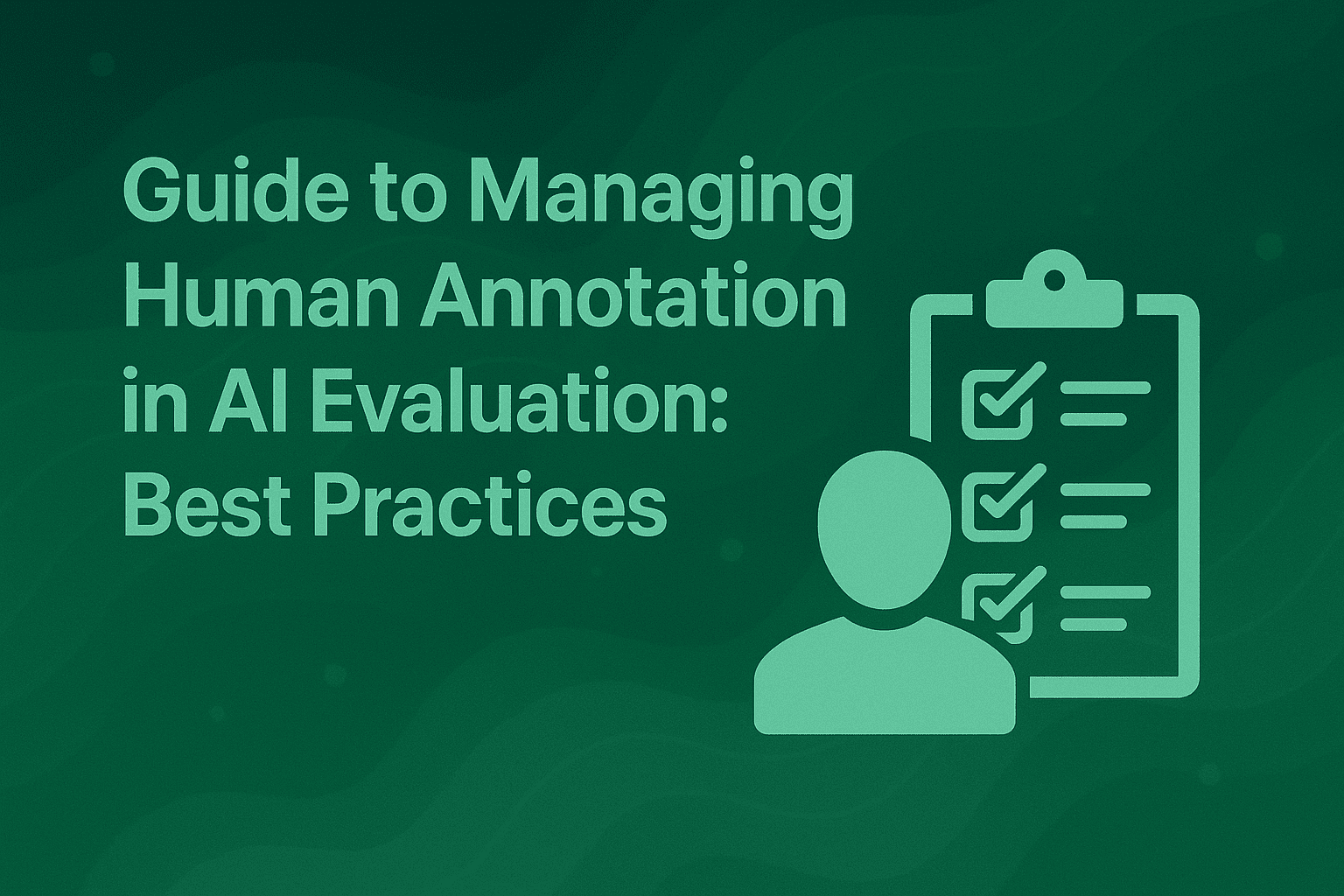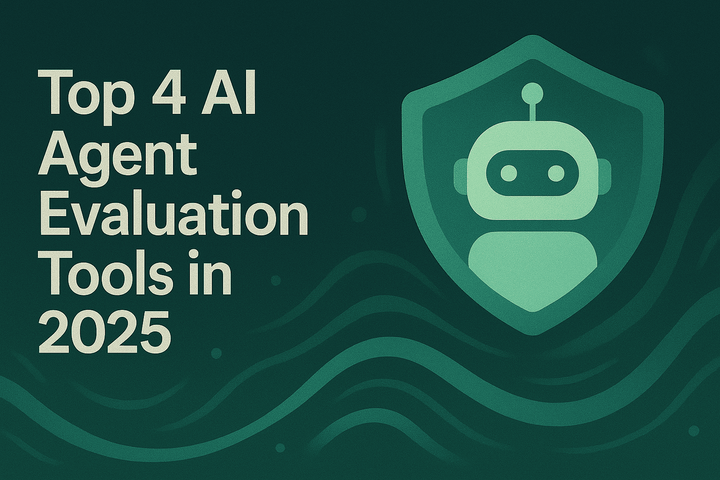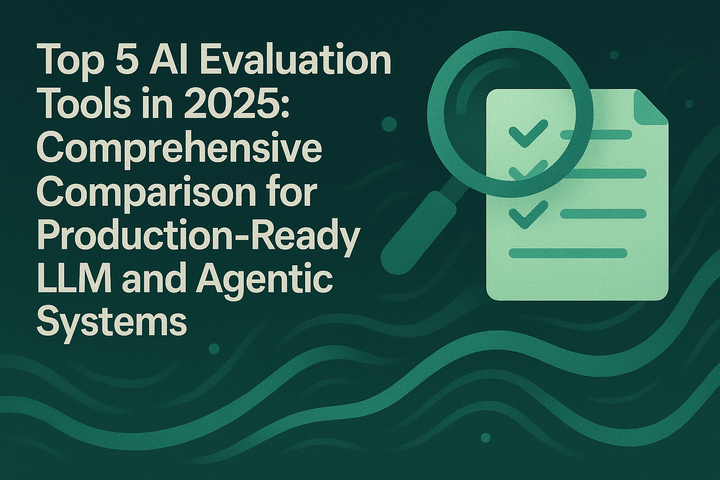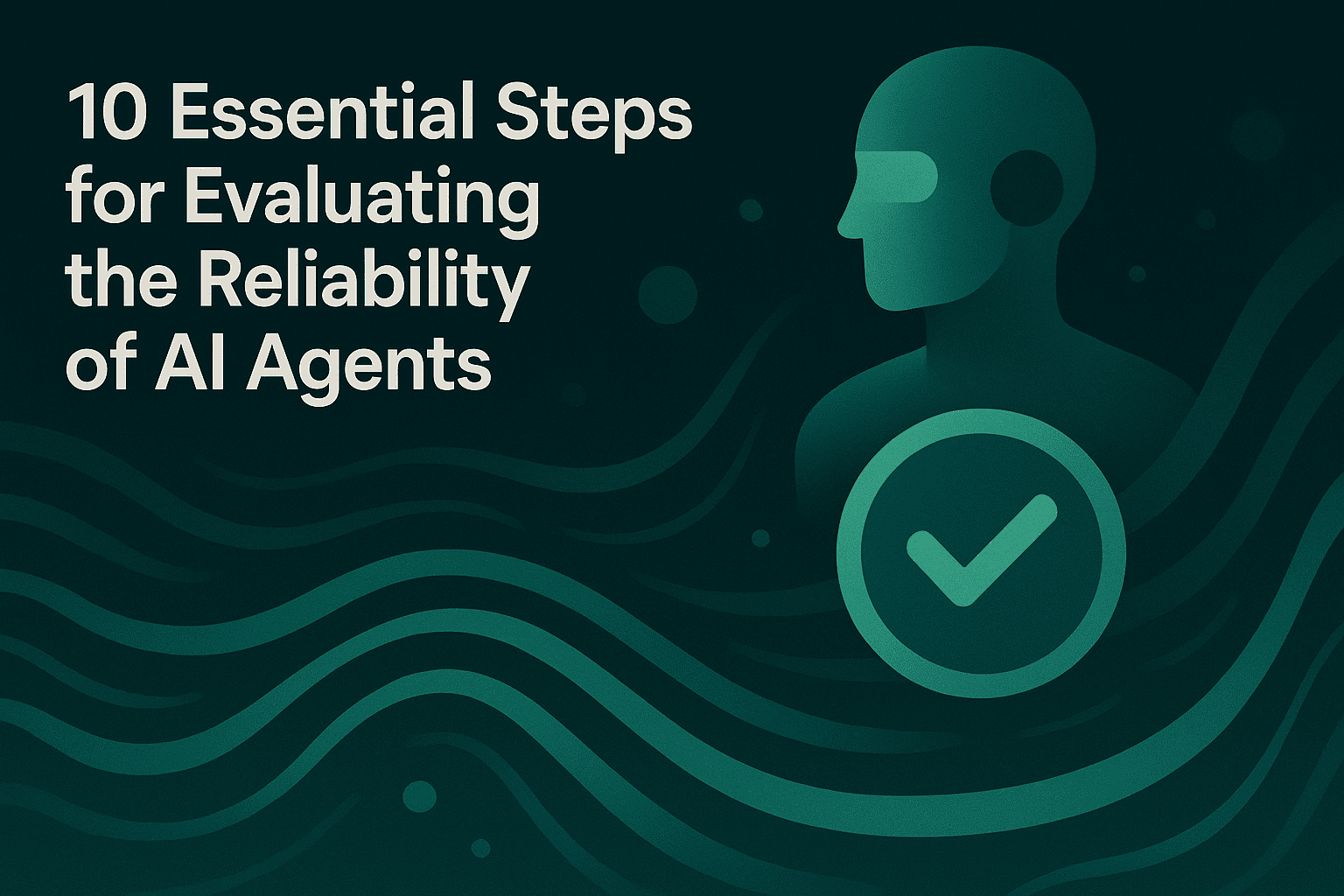Guide to Managing Human Annotation in AI Evaluation: Best Practices

Human annotation remains the gold standard for training and evaluating AI systems, yet managing annotators effectively presents significant challenges for AI teams. As enterprises scale their AI applications, establishing robust annotation workflows becomes critical to maintaining model quality and reliability. This guide explores evidence-based practices for managing human annotation in AI evaluation, drawing from recent research and industry implementations.
The Critical Role of Human Annotation in AI Evaluation
Human annotation provides ground truth data that enables machine learning models to learn patterns and make accurate predictions. The quality of these annotations directly impacts model performance across training, validation, and evaluation phases.
Research shows that annotated data is crucial for measuring model accuracy, precision, and recall against established benchmarks. Human annotators bring contextual understanding and domain expertise that automated systems struggle to replicate, particularly for subjective tasks like sentiment analysis or content moderation.
In the era of generative AI, human annotation has become even more essential for evaluation purposes. Large language models require human oversight to assess whether generated responses accurately answer user queries and align with human preferences. This human-in-the-loop approach ensures AI systems maintain quality standards before deployment.
Key Challenges in Managing Human Annotation
Annotator Inconsistency and Bias
Even highly experienced domain experts demonstrate significant disagreement when annotating identical data. A Nature study on clinical decision-making found that 11 ICU consultants showed only fair agreement (Fleiss' κ = 0.383) when annotating the same patient data. This inconsistency introduces noise into training datasets that can adversely impact AI model performance.
Annotator subjectivity stems from inherent expert bias, individual judgments, and interpretation differences. Different annotators may classify the same phenomenon differently based on their professional backgrounds, cultural contexts, and personal experiences.
Scale and Resource Constraints
Annotating large datasets is time-consuming and resource-intensive. Organizations must balance the need for comprehensive, high-quality annotations against practical constraints like budget, timeline, and annotator availability. Manual annotation becomes impractical at scale, creating bottlenecks in AI development workflows.
Complexity of Generative AI Evaluation
Generative AI poses unique annotation challenges because writing quality is inherently subjective. Project managers must develop objective metrics to evaluate creative outputs, establish clear evaluation criteria, and ensure consistency across annotator teams working on nuanced language tasks.
Best Practices for Managing Human Annotation
Develop Comprehensive Annotation Guidelines
Clear, detailed annotation guidelines form the foundation of consistent labeling. Research published at NAACL 2024 identified eight common vulnerabilities in annotation guidelines and proposed using large language models to identify weaknesses before deployment.
Effective guidelines should include:
- Specific task definitions with concrete examples
- Decision trees for handling edge cases
- Clear taxonomies for classification tasks
- Examples of correct and incorrect annotations
- Protocols for handling ambiguous cases
Guidelines must function as living documents, continuously refined based on annotator feedback and emerging challenges. As annotation complexity increases, more detailed instructions become necessary to maintain inter-annotator agreement.
Implement Rigorous Annotator Training
Initial training should cover annotation guidelines, best practices, and annotation tool usage. Periodic training sessions reinforce guidelines, address emerging issues through specific examples, and introduce new techniques as evaluation requirements evolve.
Organizations should create collaborative environments that encourage knowledge sharing among annotators. This includes:
- Structured onboarding programs for new annotators
- Regular calibration sessions where annotators discuss challenging cases
- Feedback loops connecting annotators with subject matter experts
- Documentation of common annotation patterns and edge cases
Before granting access to production data, organizations should design tests that evaluate annotator capabilities and ensure they understand tasks thoroughly. This screening process helps identify annotators with appropriate skills and domain knowledge for specific annotation requirements.
Establish Multi-Layer Quality Control
Quality assurance requires systematic processes throughout the annotation lifecycle. Organizations should implement:
Review Cycles: Experienced annotators review work from newer team members, providing constructive feedback to improve consistency and accuracy.
Consensus Pipelines: When annotators disagree, consensus mechanisms determine correct annotations. However, research indicates standard approaches like majority vote can lead to suboptimal outcomes. More sophisticated approaches involve assessing annotation learnability before seeking consensus.
Quality Screens: Regular accuracy checks ensure annotations meet established standards. These screens should identify systematic errors and training gaps requiring intervention.
Leverage Human-in-the-Loop Workflows
Combining human expertise with automated assistance optimizes annotation efficiency. Human-in-the-loop approaches enable iterative refinement where:
- AI systems suggest labels that annotators review and correct
- Algorithms identify the most informative data points requiring human attention
- Automated tools handle routine classifications while humans focus on complex cases
- Continuous feedback improves both human and machine performance over time
This collaborative approach accelerates annotation workflows while maintaining quality standards that purely automated systems cannot achieve.
Measuring Annotation Quality with Inter-Annotator Agreement
Understanding Agreement Metrics
Inter-annotator agreement (IAA) quantifies consistency across annotators, providing objective measures of annotation reliability. Several statistical measures assess IAA, each suited to different scenarios:
Cohen's Kappa: Measures agreement between two annotators while accounting for chance agreement. Cohen's kappa ranges from -1 (complete disagreement) to 1 (perfect agreement), with 0 indicating agreement no better than random chance. Values above 0.75 generally indicate excellent agreement, though interpretation depends on task complexity.
Fleiss' Kappa: Extends Cohen's kappa to three or more annotators. Fleiss' kappa works when different items may be rated by different individuals from a larger annotator pool, making it particularly useful for large-scale annotation projects with rotating teams.
Krippendorff's Alpha: Useful for multiple raters providing multiple ratings, accommodating various data types and missing data scenarios.
Setting Agreement Thresholds
Organizations should establish minimum IAA thresholds before beginning annotation projects. These thresholds vary by domain and task complexity. Medical and healthcare applications typically require higher agreement levels due to critical decision-making requirements.
When agreement falls below acceptable thresholds, organizations should:
- Review annotation guidelines for ambiguities
- Provide additional training on problematic categories
- Investigate whether task definitions need refinement
- Consider breaking complex tasks into simpler subtasks
- Assess whether annotators possess necessary domain expertise
Continuous Quality Monitoring
Regular evaluation and feedback maintain annotation quality throughout project lifecycles. Organizations should:
- Calculate IAA metrics periodically across the annotation team
- Track individual annotator performance over time
- Identify systematic biases or drift in annotation patterns
- Conduct spot checks on completed batches
- Gather annotator feedback on guideline clarity and task difficulty
This ongoing monitoring enables rapid identification and correction of quality issues before they compromise dataset integrity.
How Maxim AI Supports Human Annotation Workflows
Maxim AI's Data Engine provides comprehensive data management capabilities designed specifically for AI evaluation workflows. Teams can seamlessly import multi-modal datasets, continuously curate and evolve them from production data, and enrich annotations through both in-house and Maxim-managed labeling workflows.
The platform's evaluation framework enables teams to define and conduct human evaluations for last-mile quality checks and nuanced assessments that automated metrics cannot capture. This integration ensures human feedback directly informs model improvements and deployment decisions.
Organizations can create targeted data splits for specific evaluations and experiments, enabling rigorous testing across diverse scenarios. The observability suite allows teams to identify production issues requiring human review, closing the loop between real-world performance and continuous annotation efforts.
By centralizing annotation workflows, quality metrics, and evaluation results, Maxim AI helps cross-functional teams collaborate effectively on maintaining high-quality datasets throughout the AI development lifecycle.
Conclusion
Managing human annotation effectively requires balancing quality, consistency, and scalability through systematic processes and appropriate tooling. Organizations that invest in comprehensive guidelines, rigorous training programs, and continuous quality monitoring build the foundation for reliable AI systems.
As AI applications grow more complex, particularly in generative AI domains, human oversight becomes increasingly critical for ensuring models align with human values and produce trustworthy outputs. By implementing evidence-based annotation practices and measuring agreement through statistical methods, teams can maintain the high-quality datasets necessary for competitive AI applications.
Ready to streamline your AI evaluation workflows with comprehensive data management and human annotation capabilities? Request a demo to see how Maxim AI accelerates your team's path to reliable AI deployment.


